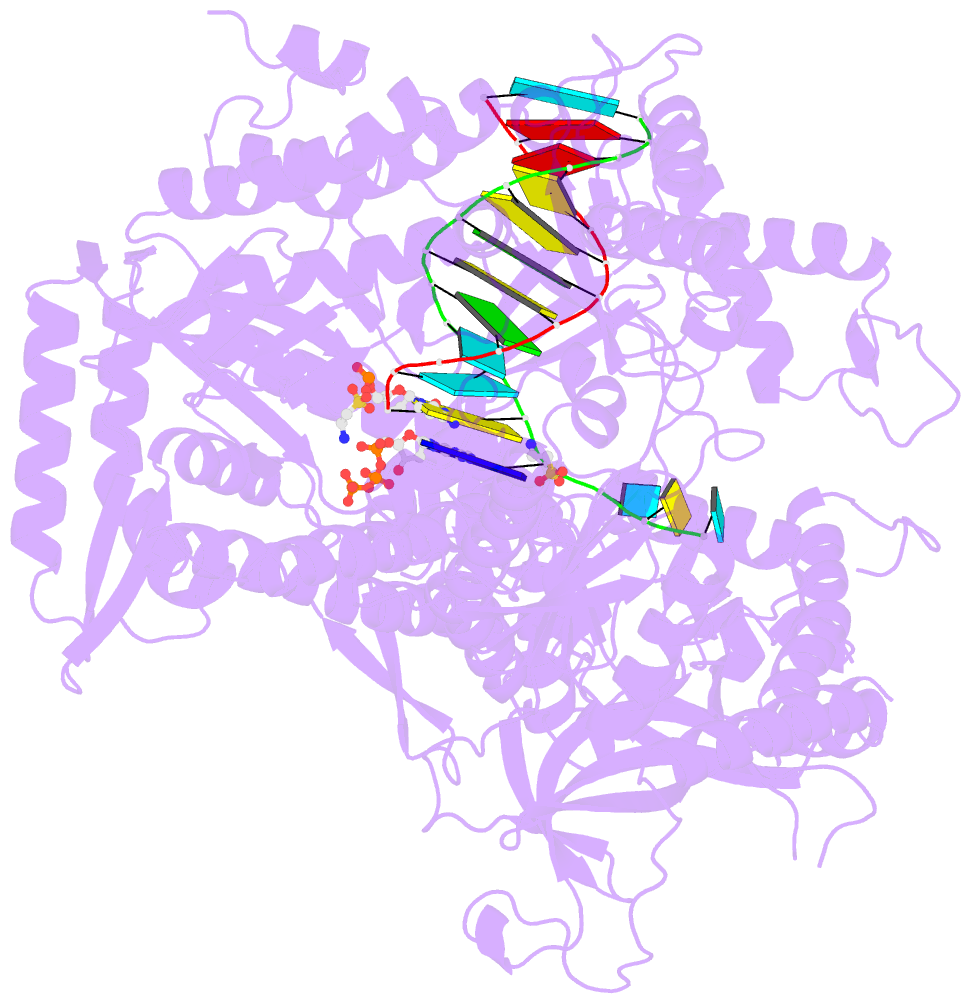Summary information and primary citation
- PDB-id
- 4m8o; SNAP-derived features in text and JSON formats;
DNAproDB
- Class
- transferase-DNA
- Method
- X-ray (2.2 Å)
- Summary
- Ternary complex of DNA polymerase epsilon with an incoming datp
- Reference
- Hogg M, Osterman P, Bylund GO, Ganai RA, Lundstrom EB, Sauer-Eriksson AE, Johansson E (2014): "Structural basis for processive DNA synthesis by yeast DNA polymerase epsilon." Nat.Struct.Mol.Biol., 21, 49-55. doi: 10.1038/nsmb.2712.
- Abstract
- DNA polymerase ɛ (Pol ɛ) is a high-fidelity polymerase that has been shown to participate in leading-strand synthesis during DNA replication in eukaryotic cells. We present here a ternary structure of the catalytic core of Pol ɛ (142 kDa) from Saccharomyces cerevisiae in complex with DNA and an incoming nucleotide. This structure provides information about the selection of the correct nucleotide and the positions of amino acids that might be critical for proofreading activity. Pol ɛ has the highest fidelity among B-family polymerases despite the absence of an extended β-hairpin loop that is required for high-fidelity replication by other B-family polymerases. Moreover, the catalytic core has a new domain that allows Pol ɛ to encircle the nascent double-stranded DNA. Altogether, the structure provides an explanation for the high processivity and high fidelity of leading-strand DNA synthesis in eukaryotes.





